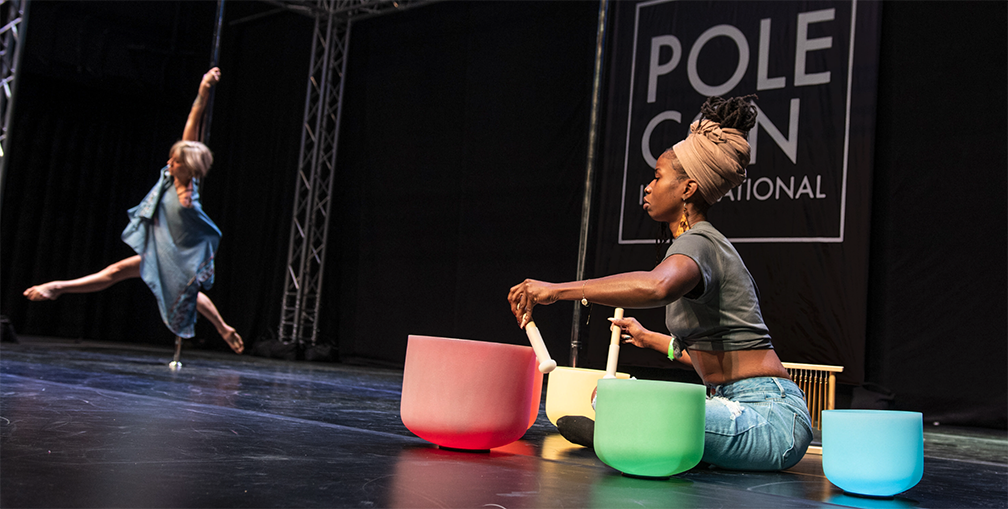You’re doing everything right—Training both sides. Eating well. Hitting the gym and the studio. …But…

Why is it sometimes harder to dance in shoes and sometimes easier to dance in shoes?
There’s lots of reasons to dance in stiletto heels!
They look amazing, they can help you reach higher on the pole more easily, and you can do all sorts of interesting transitions and movements when using them as a complementary apparatus to the pole.
So why is it sometimes so much harder to do tricks in heels for some people while others feel like it makes achieving the movement or pole trick easier?
Increasing movement difficulty
Generally to progress a movement from a fitness perspective with the intention of making it harder, you can do all or some of the following:
- Increase weight
- Increase instability
- Increase lever length.
Heels do all that. They can add a few ounces or a few pounds of weight depending in the height and style. They definitely increase instability with less surface area of your foot connected to the floor, and they increase the length of your legs which changes the lever length in relation to your torso.
So if heels do all those things to make movements harder, why for some people does wearing heels make things easier ?
Creating tension
Since many people come to pole without a fitness or movement background, the idea of creating tension in the body is new. Most of us sit all day and don’t use many of our muscles at all.
Try doing a bicep curl, bending your elbow, imagining you’re lifting something heavy off the ground like a full bag of groceries and see how your body feels, paying attention to what muscles you’re using and how much strain they feel under. Now actually get a full bag of groceries and try to pick it up. You’ll likely feel more tension and more muscles respond more strongly to the actual bag of groceries rather than the imaginary one.
Being able to create tension in the body means that you can figure out how much tension your body needs to create to do any activity. It’s what helps you hold an egg without crushing it with the same hand that can also lift a bag full of groceries.
Doing on the pole movements like handstands or forearm stands not only help us balance by providing something for us to lean against it but also help us internally stabilize our core and give our other muscles something to react to. Typically holding a pole forearm stand is much easier than doing one in the middle of a room without a pole.
So what does this have to do with shoes?
Even though wearing shoes can be more difficult, for people who have trouble connecting to and turning on an appropriate level of internal tension in their body might benefit from wearing shoes because it helps the muscles understand they need to work.
You can apply this off the pole as well and add weights (even light ones) to any body weight movement and see if you can execute the movement more easily than without the extra weight.
It’s important to remember that different techniques work better for different people. Trying out different things might not immediately help you, but it could be a way to unlock a movement for a student. Don’t discount a technique because it didn’t work for you.
Latest posts by Colleen (see all)
- Interview with New PoleCon Instructor: Melonsl - May 9, 2025
- PoleCon Hub Page: PoleCon Info - April 25, 2025
- Interview with New PoleCon Instructor: Aerial Crystal - April 4, 2025


